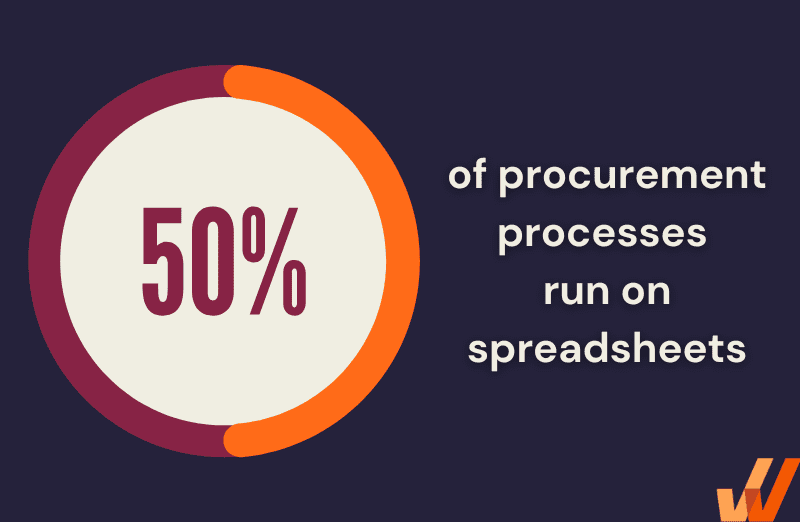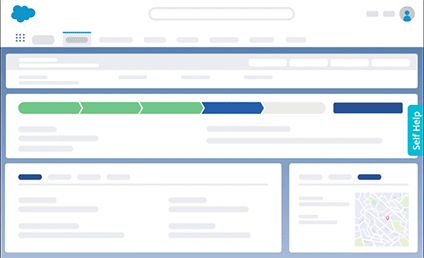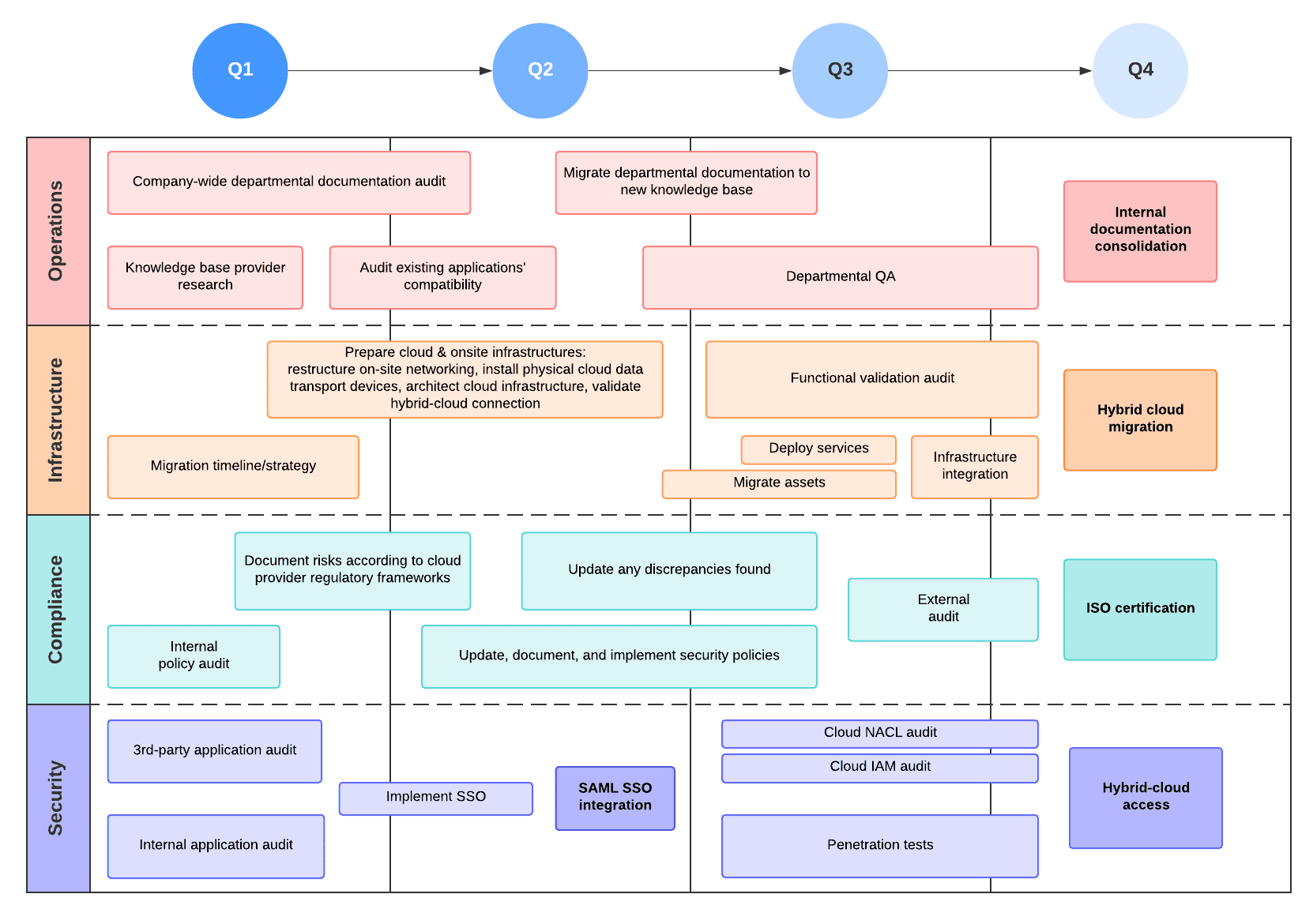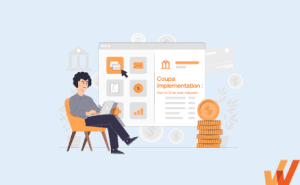11 Key Procurement Challenges to Overcome (2024)
- Published: November 3, 2022
- Updated: April 18, 2024


Procurement is a highly collaborative function that sits at the intersection of internal and external operations.
It puts leaders and teams in a unique position. Not only do they need to be great communicators, but they also need to think about:
- Being great market researchers
- Having visibility into every department’s financial health and needs
- Aligning daily operations with high-level strategy
- Building expertise in detecting and managing risks
In this blog, we explore the difficulties of wearing so many hats and how procurement leaders can build a strong crisis management strategy.
Top 11 Procurement Challenges for 2024
- Contract management
- Digitalization of procurement and S2P processes
- Resistance to e-procurement adoption for employees, suppliers, and vendors
- Reskilling, upskilling, and onboarding employees on digital procurement applications
- Supplier and vendor onboarding
- Providing technology support for suppliers and vendors
- Inaccurate data
- Poor internal communication
- Inefficient processes
- Risk management and mitigation
- Lack of transparency
Why is Procurement Difficult?
The procurement process is challenging because it involves teams who manage various responsibilities. From communicating with vendors to running compliance checks, processing payments, and analyzing market trends, a lot goes into running a function with such high stakes.
The procurement function can even be forced to simultaneously manage hundreds of purchase orders, vendors, and suppliers. A negligent mistake or sudden market change can impact your day-to-day operations and your ability to generate revenue.
To avoid this, procurement leaders ensure that their teams are equipped with the right tools and strategies to overcome predictable and unexpected challenges.
Top 11 Procurement Challenges Facing Organizations in 2024
The past two years have shuffled the priorities of many procurement leaders. The COVID-19 pandemic introduced companies to an onset of challenges, like sharp changes in demand, labor shortages, and political changes. Procurement teams are cracking down on their ability to be more proactive, adaptable, and analytical to combat volatile supply changes.
In the coming years, 81% of leaders agree that procurement needs to reimagine its operations. We’ll walk you through top 11 challenges procurement teams are expected to face as they shift toward more future-ready practices.
1. Contract management
Consumer prices in June 2022 were up 9.1%, breaking a 40-year record. During times of inflation, procurement processes risk running into budget issues if they aren’t careful about how they buy their goods. Inefficient contract management increases the likeliness of companies being locked into pricing changes that they can’t afford.
Procurement teams often make the mistake of not checking up on contracts after they’ve been signed. When this happens, companies can remain unaware of their ability to cut off poor-performing vendors and suppliers or the terms they have put in place to manage price increases based on pre-determined metrics.
2. Digitalization of procurement and S2P processes
Most companies are turning to digital solutions to transform their procurement and source-to-pay processes. 69% of leaders say digitization has become even more valuable after COVID-19.
Digitization introduces many benefits to the procurement function, like accelerated processes, increased transparency, and better decision-making. But introducing new tools and workflows is a major organizational change that needs to be implemented correctly. Procurement leaders and team managers will be responsible for building change management plants to guide employees and partners toward success.
3. Resistance to e-procurement adoption for employees, suppliers, and vendors
When employees, suppliers, and vendors are used to conducting processes a certain way, it becomes difficult to get buy-in for new initiatives. You may run into instances where individuals reject change because they believe it would slow down their workflows and dampen their productivity.
Managers will need to ensure teams have enough time and resources to understand the benefits of this change — not just for the company, but for their individual KPIs.
4. Reskilling, upskilling, and onboarding employees on digital procurement applications
Once you’ve got buy-in from your employees for digital transformation, the next uphill battle is helping teams familiarize themselves with new processes. You’ll want to take a training approach that isn’t time-consuming and inconvenient for employees. Digitization efforts will focus on three areas:
- Reskilling: Helping employees move away from old habits, processes, and workflows when completing tasks
- Upskilling: Teaching employees new processes that can help them complete their work faster and with more precision
- Onboarding: Introducing employees to new software systems and their features
5. Supplier and vendor onboarding
This onboarding process shows your vendors and suppliers what they can expect when working with your company. Onboarding doesn’t just happen at the start of your relationship, it also occurs when you introduce new processes and software, especially those that alter how you communicate, place orders, and process payments.
Managing supplier and vendor onboarding for more than one supplier and vendor can be challenging, but it can be streamlined with digital tools. The supplier and vendor onboarding process typically involve a few things:
- Collecting documents
- Answering standard questions about their business operations
- Running compliance checks
- Setting up payment processing systems
- Going over communication guidelines
- Reviewing timelines, deliverables, and performance KPIs
6. Providing technology support for suppliers and vendors
Your suppliers and vendors should also have access to digital tools to help them communicate better with your team. Getting this technology support can be challenging if your suppliers and vendors don’t have complete trust and confidence in your business. They might not want to entrust their data to your technology systems, or might be hesitant about dedicating their time to learning about new tools and processes.
You’ll want to personalize your onboarding and training programs for vendors and suppliers so it best meets their concerns. Finding a way to do this at scale will involve analyzing different digital solutions and finding platforms that can deliver an easy-to-use experience.
7. Inaccurate data
50% of procurement processes run on spreadsheets.
This manual form of data entry is both time-consuming and inconvenient. It’s also a big source of human error. Most of the time, employees are locked into this cycle of repetitive work that doesn’t contribute to their performance goals. This lowers your employees’ productivity and causes them to make mistakes.
Not to mention, employees can spend hours looking for information in disparate systems before analyzing them, and keying them in. Even if you have shortcuts, they can’t be scaled to automatically process large volumes of data in real time — which will ultimately give you the most accurate data.

8. Poor internal communication
A survey by McKinsey found that one of the highest-impact use cases for digital solutions is accelerating internal collaboration.
Procurement teams aren’t like most organizational departments. They aren’t historically tied to a particular department because it used to be defined as a transactional function.
However, companies find the most success today when procurement leaders take on a more strategic role in shaping how companies can mitigate risk and ensure business continuity. This means they must be aligned with financial data and growth projections from all business departments. Poor communication can lead to poor spending divisions that impact financial health.
9. Inefficient processes
Your procurement processes should work in tandem with financial systems that are in place across the organization. Teams use automation so they can maintain the speed and accuracy of the following processes:
- Vendor management
- Contract management
- Invoice management
- Building and tracking purchase orders
- Applying for and approving purchase requisitions
10. Risk management and mitigation
A variety of risks can impact procurement processes. A report by McKinsey groups these risks into three primary sources:
- Product shortage risks
- Supplier risks
- Inflation risks
Today, the lack of digitization can also be considered a risk. Deep analysis is a key component of many procurement risk-management strategies. With digital solutions, teams can build more accurate forecasts and scenario-based pricing models.
11. Lack of transparency
60% of business leaders say the lack of transparency between finance and procurement functions and suppliers introduces risk. This poor visibility can directly impact cash flow, with leaders saying transparency can improve cost savings by 11-20%.
To improve procurement transparency, leaders may have to restructure existing processes completely. Here are a few examples of initiatives that you can implement:
- Removing manual data entry
- Integrating procurement analytics into core financial software
- Implementing new best practices for data entry and communication
- Training employees, suppliers, and vendors on these best practices
5 Tips for Overcoming Source-to-Pay and Procurement Challenges
After COVID-19, the procurement function has become more influential in defining an organization’s long-term operational goals.
86% of leaders found gaps in their procurement processes. Over the past two years, the weaknesses that surfaced in procurement processes have resulted in more resource investment in efforts to overcome core challenges. Companies today are working toward defining more structure and efficiency in procurement capabilities like cross-functional collaboration, procurement analysis, vendor sourcing strategies, and more.
Here are five actionable tips that you can include in your action plan for overcoming source-to-pay and procurement challenges:
1. Invest in a digital adoption platform
A digital adoption platform helps employees, vendors, and suppliers onboard and transition smoothly to new digital processes. Platforms like Whatfix provide in-app support through guided product flows, pop-up content, task lists, and self-help knowledge bases embedded directly within the app.
Digital adoption platforms can also help you overcome resistance from your team and clients by reducing training and implementation time. It creates a user-friendly environment that’s interactive, personalized, and optimized for 24/7 support.

2. Create a digital transformation strategy and IT roadmap
Your digital transformation strategy defines the purpose of your efforts, the outcomes you want to achieve, and the key processes and procedures you need to focus on to implement that change. It sets the tone for your entire digitization process and ensures that all your digital tools can best serve your organization’s unique goals and working styles. Without a strategy, it’s easy to start spending unnecessarily on solutions that may be popular in the market but not a good fit for what your team needs.
The IT roadmap is a document that illustrates how that strategy will look when fit into a timeline. It helps your team plan out the stakeholders and responsibilities that will be involved in every step of the change management process. A roadmap helps companies avoid overcommitting resources at each phase of digitization.

3. Gather feedback from your procurement team members, suppliers, and vendors
You want to consistently communicate well with team members, suppliers, and vendors, not just when you’re running into problems. Check in regularly on existing processes so you can proactively identify areas of improvement before they become larger friction points.
For example, you can check in with a vendor after completing high-volume or time-sensitive orders to see if there was anything you could have done differently to make processes run smoother. If you take the initiative to learn about your vendor’s preferences and working styles, you’ll have the advantage of a more reliable purchasing cycle the next time you’re in charge of the same project.
4. Form a team dedicated to upskilling and reskilling
People learn better when they feel like they’re a priority. Employee learning and development programs fail when they feel rushed, cost-constrained, and irrelevant. You wouldn’t want your upskilling and reskilling efforts to be unengaging and boring, especially if you’re making your employees throw out processes that are familiar to them.
Instead, assemble a team of highly-skilled managers and employees to lead these efforts. Having a dedicated team keeps your company accountable for its training efforts. It also gives employees a centralized point of contact to seek additional information. The team can be in charge of procedures like:
- Creating training plans, activities, and learning milestones
- Checking in with employees after each activity or milestone
- Collecting, analyzing, and implementing feedback
5. Foster a culture based on agility and change
If there’s anything the last two years have taught us, it’s that procurement risks can happen at any time. Organizations are responding to this by future-proofing their procurement function to be proactive and adaptable.
Procurement analytics solutions lead this effort by helping companies capture and use historical data to forecast future needs and high-impact risks. Leaders should use analytics tools to their advantage and lead by example, giving teams visibility into different risk scenarios and brainstorming risk mitigation strategies. By incorporating this into your overarching procurement strategy, you can encourage your team to be forward-thinking and prepared for anything.
The companies that found the most success with their procurement processes are the ones equipped with the tools to be value-driven and analytical.
Whatfix gives your employees, vendors, and suppliers the support they need to become more analytical and proactive in their day-to-day responsibilities. Tailor the onboarding and ramp-up journey with interactive pop-ups, task lists, and self-help resources. You can also use powerful user analytics to identify areas of difficulty and optimize in-app learning content to drive the most frictionless path to success.
Whether it’s a complete restructure of existing processes or the introduction of additional technology-driven workflows, you can use our digital adoption platform to turn your team and partners into power users — without spending hours in training courses or reading static, unengaging material.
Thank you for subscribing!


